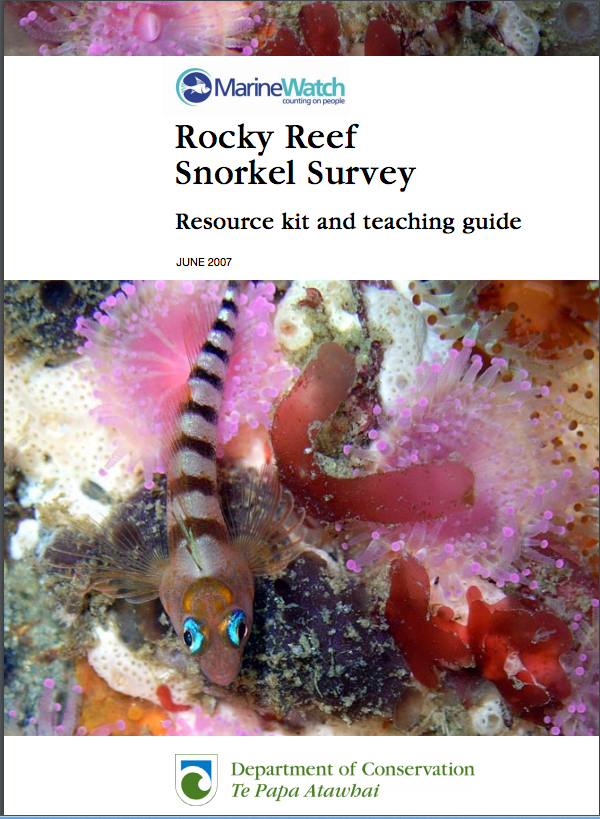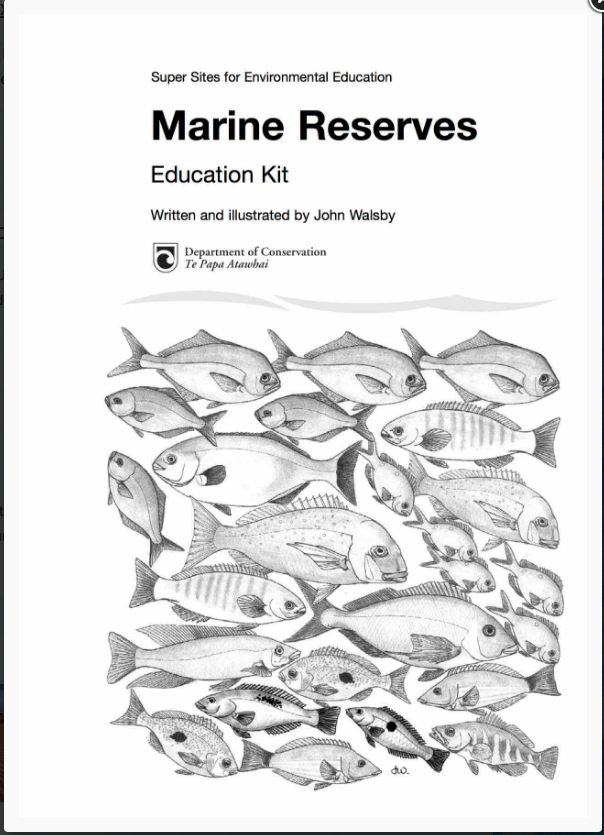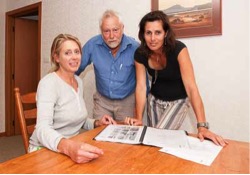 Student art from the Kamo High School Whangarei Harbor Marine Reserve projectA consistent trend in New Zealand is a move to incorporate more environmental education within the mainstream. There is great potential for our schools to be involved with marine conservation, as many have access to their local coastlines, bays and estuaries. Sadly we don't yet have a marine reserve near every school, but that can be improved on.
Student art from the Kamo High School Whangarei Harbor Marine Reserve projectA consistent trend in New Zealand is a move to incorporate more environmental education within the mainstream. There is great potential for our schools to be involved with marine conservation, as many have access to their local coastlines, bays and estuaries. Sadly we don't yet have a marine reserve near every school, but that can be improved on.
Our greatest example of a school's involvement is Kamo High School's seventh form Geography class applying successfully for a marine reserve in Whangarei Harbour. They dreamed of it happening, they did the work and the rest is history. It is now a marine reserve. Go to our Whangarei Harbour Case Study to learn more about this historic achievement.
There are some really good resources and programs running around the country. We will introduce some of these resources and programs on this page.
Experiencing Marine Reserves Education Resources
We encourage you to go to the EMR web site and get the full story on the history of this program and what is happening now.
On the EMR site you can go directly to the Marine Educator Information page. There you will find a long list of resources. Most have been made from the 'experiences' of EMR coordinators students, family members and their teachers. There is also a comprehensive Educational Manual to download.
The EMR model and programes now have expanded to most regions in the country. One exciting part of the EMR experience is the 'action' which each student is encouraged and supported to create. The action is focused on doing something to support marine conservation. Kids being kids have come up with some amazing contributions. In some cases students take the bull by the horns and develop their own proposal for a marine reserve in their own areas.
Here is a video produced by two Northland students Ryan Torckler and Trace Savage. It was a standout project which has made a brilliant job of introducing a proposal to the community for the Mokihinau Islands situated in the Hauraki Gulf off the coast of Warkworth noth of Auckland.
Student 'action' project proposes a marine reserve for Mokihinau Island
Fish Forever - Lesson Plans for relief teachers on Marine Conservation
Ria Bright, a member of a community group called Fish Forever in the Bay of Islands, Northland came up with the idea of create a set of lesson plans which high school teachers could use for relief teaching. These examine various aspects of marine conservation and marine reserves. Aimed at years 7-9.
Download the lesson plans here
More Resources
 Marine Educator Marea Neil has assembled a set of lesson plans aimed at a range of marine ecology and marine ecology topics. Go to our download page of lesson plans.
Marine Educator Marea Neil has assembled a set of lesson plans aimed at a range of marine ecology and marine ecology topics. Go to our download page of lesson plans.
An excellent Marine Mammal Poster from DoC
Coastal Surveys Teaching Resource from DoC with Estuarine and Rocky Reef sections
Harbours Bays and Estuaries from DoC
The Marine Reserve Resources for teachers from DoC
This 158-page education kit is a comprehensive guide to visiting and studying marine reserves in a way that minimises disturbance to marine life and compiles with the Marine Reserves Act 1971.
It's designed for bulk photocopying for use with a school teaching programme. You can download the kit as a series of PDFs or order a hard copy from the office below.
Every school may have one copy of each kit free and additional copies can be bought for $10 each.
Marine Reserve field trips
- Cape Rodney-Okakari Point Marine Reserve
- Long Bay-Okura Marine Reserve
- Te Whanganui-A-Hei (Cathedral Cove) Marine Reserve
- Te Angiangi Marine Reserve
- Te Tapuwae o Rongokako Marine Reserve
- Kapiti Island and Kapiti Marine Reserve field trip
Download the resource
- Cover page /contents (PDF, 289K) (opens in new window)
- Introduction (PDF, 61K) (opens in new window)
- Ready for a trip? (PDF, 42K) (opens in new window)
- Planning (PDF, 93K) (opens in new window)
- Planning for studies of intertidal (shore) and subtidal (underwater) areas.
- Long Bay-Okura Marine Reserve (PDF, 199K) (opens in new window)
- Cape Rodney-Okakari Point Marine Reserve (PDF, 179K) (opens in new window)
- Feeding fish in marine reserves (PDF, 206K) (opens in new window)
- A cross-curricular approach to a marine reserve issue.
- Classroom exercises (PDF, 174K) (opens in new window)
- How intertidal animals avoid drying out (PDF, 57K) (opens in new window)
- The seashore food cycle (PDF, 340K) (opens in new window)
- Marine feeding methods (PDF, 450K) (opens in new window)
- Marine feeding methods cont. (PDF, 525K) (opens in new window)
- Biodiversity (PDF, 287K) (opens in new window)
- The hermit crab – model study (PDF, 86K) (opens in new window)
- Fish identification and habitat relationships (PDF, 401K) (opens in new window)
- Exercises at Goat Island Bay (PDF, 619K) (opens in new window)
- Zonation on terraced rocky shores (PDF, 53K) (opens in new window)
- Zonation at Long Bay (PDF, 350K) (opens in new window)
- Zonation at Goat Island (PDF, 246K) (opens in new window)
- Distribution at Goat Island and Long Bay (PDF, 647K) (opens in new window)
- Life in rock pools (PDF, 64K) (opens in new window)
- Measuring animals in a marine reserve (PDF, 216K) (opens in new window)
- Marine reserve resources (PDF, 84K) (opens in new window)
- An action oriented approach (PDF, 34K) (opens in new window)
- Evaluation form (PDF, 19K) (opens in new window)
SeaWeek
Every year in March a national SeaWeek is run, on their website are lots of links to resources on marine education.
The Marine Reserves Education Kit
 Written and illustrated by John Walsby and published by the Auckland Conservancy of the Department of Conservation.
Written and illustrated by John Walsby and published by the Auckland Conservancy of the Department of Conservation.
Publication information
This is the third edition. The text and illustrations in the Marine Reserves Education Kit are covered by copyright.
ISBN 0-478-22151-7
Learning levels
- Primary
- Secondary
Topics
- Marine and coastal
- Native animals
- Native plants
Curriculum learning areas
- Science
- Social science
Publication information
Contact
| Tāmaki Makaurau / Auckland Office | |
| Phone: | +64 9 307 9279 |
| Address: | Ground Floor - Building 2 Carlaw Park Commercial 12-16 Nicholls Lane Parnell |

